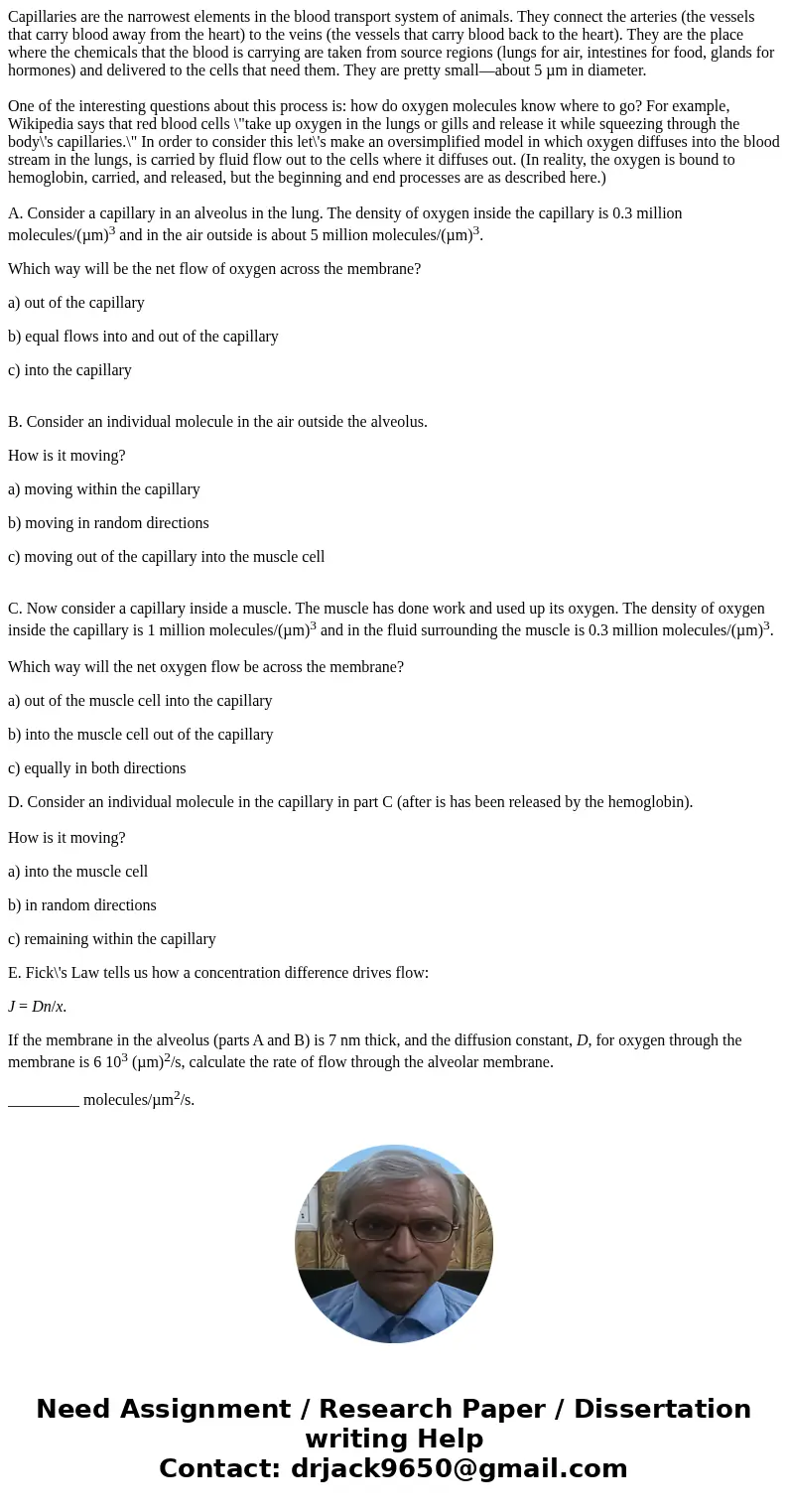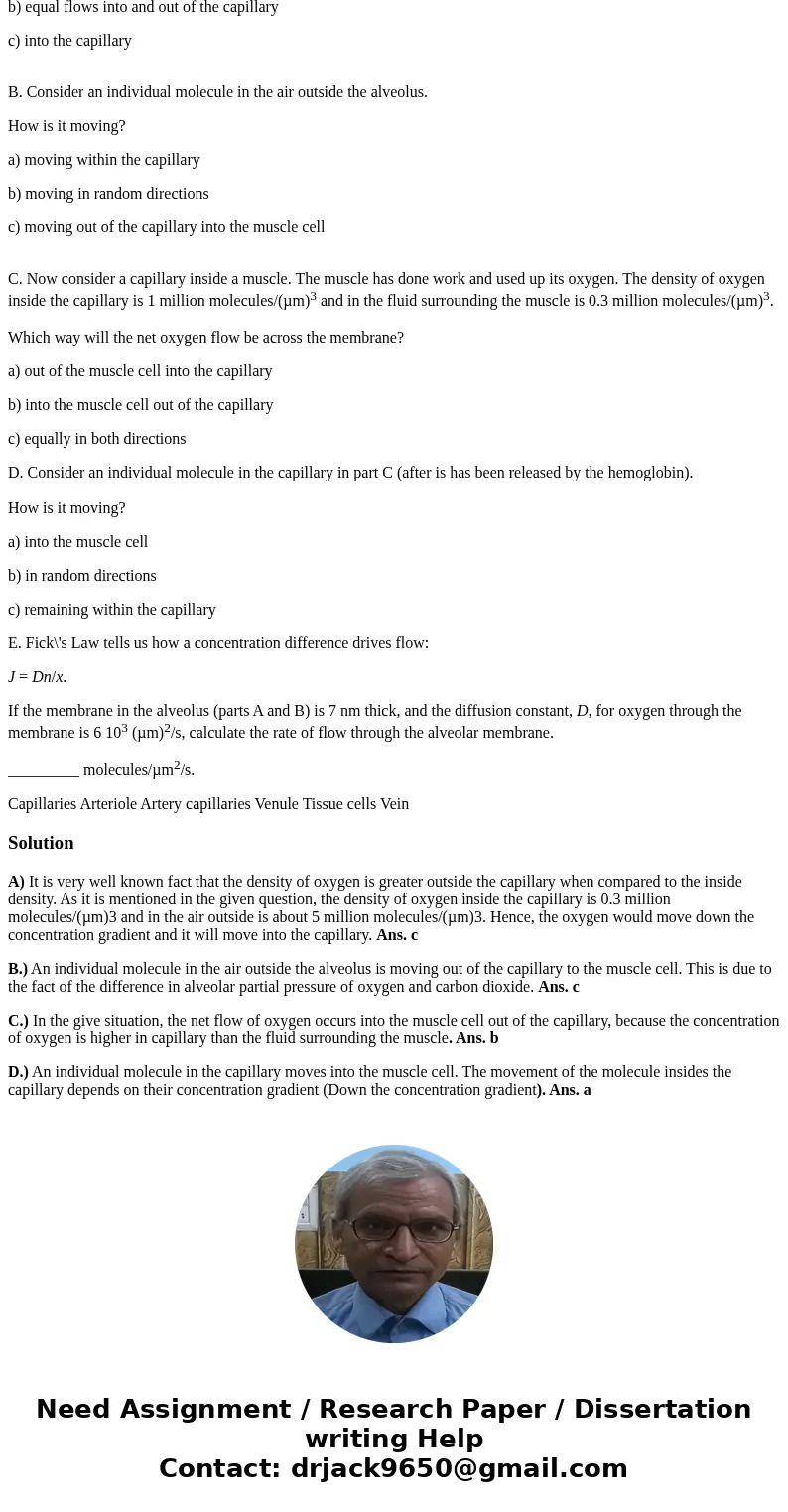Capillaries are the narrowest elements in the blood transpor
Capillaries are the narrowest elements in the blood transport system of animals. They connect the arteries (the vessels that carry blood away from the heart) to the veins (the vessels that carry blood back to the heart). They are the place where the chemicals that the blood is carrying are taken from source regions (lungs for air, intestines for food, glands for hormones) and delivered to the cells that need them. They are pretty small—about 5 µm in diameter.
One of the interesting questions about this process is: how do oxygen molecules know where to go? For example, Wikipedia says that red blood cells \"take up oxygen in the lungs or gills and release it while squeezing through the body\'s capillaries.\" In order to consider this let\'s make an oversimplified model in which oxygen diffuses into the blood stream in the lungs, is carried by fluid flow out to the cells where it diffuses out. (In reality, the oxygen is bound to hemoglobin, carried, and released, but the beginning and end processes are as described here.)
A. Consider a capillary in an alveolus in the lung. The density of oxygen inside the capillary is 0.3 million molecules/(µm)3 and in the air outside is about 5 million molecules/(µm)3.
Which way will be the net flow of oxygen across the membrane?
a) out of the capillary
b) equal flows into and out of the capillary
c) into the capillary
B. Consider an individual molecule in the air outside the alveolus.
How is it moving?
a) moving within the capillary
b) moving in random directions
c) moving out of the capillary into the muscle cell
C. Now consider a capillary inside a muscle. The muscle has done work and used up its oxygen. The density of oxygen inside the capillary is 1 million molecules/(µm)3 and in the fluid surrounding the muscle is 0.3 million molecules/(µm)3.
Which way will the net oxygen flow be across the membrane?
a) out of the muscle cell into the capillary
b) into the muscle cell out of the capillary
c) equally in both directions
D. Consider an individual molecule in the capillary in part C (after is has been released by the hemoglobin).
How is it moving?
a) into the muscle cell
b) in random directions
c) remaining within the capillary
E. Fick\'s Law tells us how a concentration difference drives flow:
J = Dn/x.
If the membrane in the alveolus (parts A and B) is 7 nm thick, and the diffusion constant, D, for oxygen through the membrane is 6 103 (µm)2/s, calculate the rate of flow through the alveolar membrane.
_________ molecules/µm2/s.
Capillaries Arteriole Artery capillaries Venule Tissue cells VeinSolution
A) It is very well known fact that the density of oxygen is greater outside the capillary when compared to the inside density. As it is mentioned in the given question, the density of oxygen inside the capillary is 0.3 million molecules/(µm)3 and in the air outside is about 5 million molecules/(µm)3. Hence, the oxygen would move down the concentration gradient and it will move into the capillary. Ans. c
B.) An individual molecule in the air outside the alveolus is moving out of the capillary to the muscle cell. This is due to the fact of the difference in alveolar partial pressure of oxygen and carbon dioxide. Ans. c
C.) In the give situation, the net flow of oxygen occurs into the muscle cell out of the capillary, because the concentration of oxygen is higher in capillary than the fluid surrounding the muscle. Ans. b
D.) An individual molecule in the capillary moves into the muscle cell. The movement of the molecule insides the capillary depends on their concentration gradient (Down the concentration gradient). Ans. a


 Homework Sourse
Homework Sourse